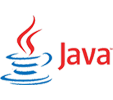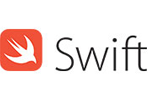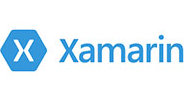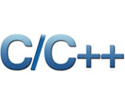Why Outsourcing Matters for U.S. Startups
Startups operate under three immutable constraints: limited runway, high uncertainty, and the need for speed. Building everything in-house may work for well-funded companies, but for many early-stage teams outsourcing key parts of development — or partnering with a specialized mobile app development company india — delivers outsized returns on time and capital.
Primary strategic outcomes
- Faster time-to-market: Reduce development cycles and reach customers sooner.
- Capital efficiency: Stretch runway by converting fixed payroll into variable delivery costs.
- Access to skills: Mobile, backend, DevOps, AI/ML specialists on demand.
- Operational maturity: Established outsourcing partners bring hardened processes, QA, and security practices.
Hidden Benefit #1 — Follow-the-Sun Development (24/7 Momentum)
One of the least obvious advantages is the ability to maintain momentum around the clock. When your product team in the U.S. hands off well-defined tickets at the end of the day, an offshore partner (for example, an app development company in india) can pick them up and make progress. The result: smaller cycle times and faster feedback loops.
How to operationalize it
- Define crisp acceptance criteria and DoD (Definition of Done) for every ticket.
- Schedule handoffs with clear context (recorded Loom videos, concise notes).
- Use CI/CD pipelines so overnight commits are validated automatically.
Hidden Benefit #2 — Risk Sharing and Predictable Delivery
Outsourcing shifts part of delivery risk onto the vendor. Mature partners accept SLAs, commit to delivery milestones, and provide commercial levers like penalty clauses or escrow models — which aligns incentives and reduces the startup’s execution risk.
Contract structures that reduce risk
- Pilot to scale: Start with a paid pilot to validate capability before signing a larger engagement.
- Milestone-based payments: Link payments to tangible deliveries and acceptance tests.
- Shared KPIs: Agree on performance metrics (bug rates, velocity, uptime).
Hidden Benefit #3 — Access to Specialized Talent Pools
Many outsourcing partners maintain deep bench strength across niches: React Native and Flutter experts, cloud architects for AWS/GCP, ML engineers, security specialists and platform engineers. A vetted mobile app development company india often has dozens — if not hundreds — of developers you can tap without long recruiting cycles.
Use cases for specialist hires
- Adding an ML-powered recommendation engine for personalization.
- Integrating real-time features (websockets, push notifications, low-latency streaming).
- Hardening security for PCI or HIPAA-compliant apps.
Hidden Benefit #4 — Faster Experimentation & Iteration
Outsourcing creates flexible capacity so that startups can run parallel product experiments. While the core team focuses on strategy and user research, outsourced squads can spin up A/B test variants, build feature branches, or iterate on onboarding flows — enabling a data-driven product velocity that’s hard to achieve with a constrained in-house team.
Experimentation patterns to adopt
- Feature flags + canary releases so experiments are safe and reversible.
- Dedicated QA cycles for each experiment to keep standards high.
- Analytics instrumentation baked into development pipelines.
Hidden Benefit #5 — Cost Predictability and Flexibility
For cash-conscious startups, outsourcing converts fixed employee costs into a more predictable variable expense. You can hire a dedicated offshore team for a set monthly fee, use time-and-materials for agile projects, or pick fixed-price contracts for well-defined scopes — all of which help manage runway more reliably.
Cost Comparison: U.S. vs India (Indicative)
Hourly rates vary with experience, location, and engagement model. These figures are indicative and intended for budgeting comparisons.
| Role | Typical U.S. Rate (USD/hr) | Typical India Rate (USD/hr) | Approx. Savings |
|---|---|---|---|
| Mobile App Developer (mid) | $80 – $120 | $20 – $40 | ~60–75% |
| Senior Engineer / Architect | $120 – $180 | $35 – $70 | ~60% |
| UI/UX Designer | $60 – $100 | $20 – $45 | ~50–65% |
| QA / Automation Engineer | $50 – $90 | $15 – $35 | ~55–70% |
Time Zone Table & Collaboration Window (U.S. — India)
| U.S. Region | Time Zone | Typical Work Hours | Overlap with India (IST) |
|---|---|---|---|
| West Coast (San Francisco) | PDT (UTC -7 / -8) | 9:00 AM – 5:00 PM | Evening overlap (8:30 PM – 11:00 PM IST) — limited but possible |
| Central (Chicago) | CDT (UTC -5 / -6) | 9:00 AM – 5:00 PM | Night overlap (10:30 PM – 1:00 AM IST) — workable for async handoffs |
| East Coast (New York) | EDT (UTC -4 / -5) | 9:00 AM – 5:00 PM | Morning overlap (8:30 AM – 12:00 PM IST) — ideal for daily syncs |
Choosing the Right Outsourcing Model
Startups typically choose among three models, each with trade-offs:
Dedicated Team
A stable group of developers managed by the vendor but effectively working as your team. Best for long-term roadmaps and continuous delivery.
Fixed Price
Good for clearly defined projects (MVPs with fixed requirements). Lower risk on budget but less flexible for changes.
Time & Material
Flexible and agile — you pay for actual effort. Ideal for iterative development and rapidly changing product priorities.
Quality, Security & Compliance — What to Demand
Don’t trade quality for cost. A responsible outsourcing partner should provide:
- CI/CD pipelines with automated testing (unit, integration, E2E).
- Secure coding standards, vulnerability scans, and SCA (software composition analysis).
- Defined SLAs and support windows for production issues.
- Data protection measures, NDA & IP transfer clauses, and compliance assistance for regulations (GDPR, CCPA, HIPAA when applicable).
Onboarding & Communication Best Practices
1. Share product context, not just specs
Provide user personas, JTBD (jobs-to-be-done), and example flows. Context reduces rework.
2. Use lightweight rituals
Daily standups in overlap windows, weekly demos, and a single backlog owner (PO) keep priorities clear.
3. Make async communication first-class
Use recorded demos, clear ticket descriptions, and documented handoffs. This makes timezone differences a productivity advantage rather than a friction point.
Case Study: U.S. Fintech Startup
A New York-based fintech startup needed a PCI-compliant mobile wallet with accelerated velocity. They engaged an app development company in India using a dedicated team model. Outcomes:
- Launch of MVP in 12 weeks (vs. estimated 6 months in-house).
- ~50% reduction in upfront development cost.
- Shorter sprints with continuous delivery and strong security posture.
Common Pitfalls & How to Avoid Them
- Pitfall: Poorly defined requirements → Fix: Start with user stories and acceptance criteria.
- Pitfall: Choosing cheapest vendor → Fix: Prioritize portfolio, references, and a paid pilot.
- Pitfall: Weak governance → Fix: Appoint a product owner and require regular demos.
Step-by-Step Roadmap to Outsource Successfully
- Define MVP scope, success metrics (DAU, retention, conversion).
- Shortlist 3–5 vendors with relevant case studies and U.S. references.
- Run a 2–6 week paid pilot to validate communication and delivery.
- Agree on the engagement model and SLAs (uptime, bug fix times).
- Sign contracts covering NDA, IP assignment, DPA, and exit terms.
- Onboard tools: Slack, Jira, GitHub, CI/CD, and monitoring dashboards.
- Conduct weekly demos, monthly business reviews, and quarterly roadmap resets.
Future Trends — Why Outsourcing Will Keep Rising
AI/ML Expertise on Demand
Expect more startups to outsource specialized ML workloads to partners with domain-experienced engineers and data pipelines.
Cross-Platform Acceleration
React Native and Flutter maturity lowers cost and time for multi-platform releases — an attractive outcome when working with global teams.
Platform Engineering & DevSecOps
Outsourcing is shifting from raw development work to delivering integrated platform capabilities (CI/CD, infra-as-code, observability) — giving startups production-grade delivery without building SRE teams immediately.
Conclusion
For U.S. startups, outsourcing app development — especially with established partners like a reputable app development company in India — is far more than a way to save money. It’s a strategic choice that enables faster releases, continuous momentum, access to specialized talent, and predictable delivery. The key to success is careful partner selection, clear governance, strong onboarding, and treating your outsourcing partner as an extension of your team rather than a black box.














